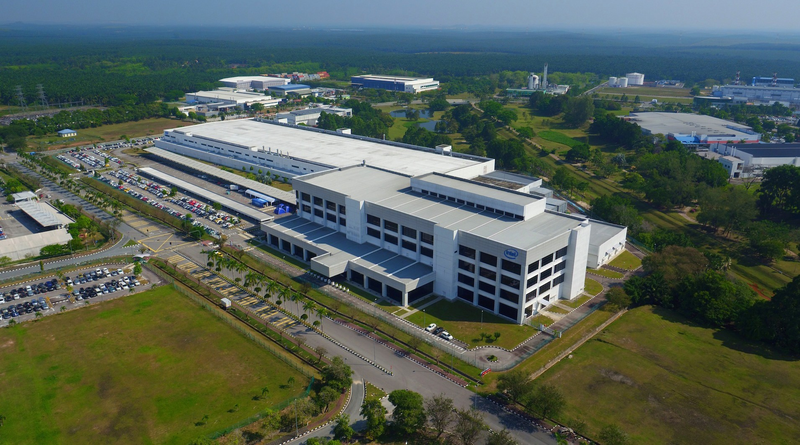Southeast Asia Emerges as the Second Semiconductor Hub, as Intel, NVIDIA, Apple Accelerate Relocation
Input
Modified
Global Tech Giants Like Intel and Micron Shift Toward Southeast Asia Vietnam Rises Following Malaysia and Singapore Supply Chain Realignment Around Southeast Asia Gains Traction

Amid shrinking capital expenditures by semiconductor companies due to rising uncertainties such as tariffs following the return of U.S. President Donald Trump to power, Southeast Asian nations like Malaysia, Singapore, and Vietnam are emerging as new hubs for semiconductor production. Given that it typically takes three to four years for a semiconductor fabrication plant to become fully operational after an investment decision is made, it is expected that the global semiconductor supply chain will be realigned around Southeast Asia after the end of President Trump’s current term.
Low Labor Costs and Government-Led Incentives Fuel Southeast Asia’s Rise
On the 13th, the global semiconductor industry association SEMI (Semiconductor Equipment and Materials International) released a report highlighting Southeast Asia’s growing importance in the global semiconductor supply chain. SEMI noted, “Countries like Malaysia, Singapore, and Vietnam are rapidly gaining prominence, particularly in the Assembly, Test, and Packaging (ATP) sector.” It added, “These nations are leveraging their proximity to leading East Asian markets such as Taiwan and South Korea, along with advantages like low labor costs, government-driven investment strategies, tax incentives, and overall lower production costs to compete aggressively for semiconductor investments.”
Malaysia, already home to major players like Intel, Broadcom, and Micron, now accounts for 13% of global semiconductor back-end processing and is emerging as one of Asia’s key supply chain hubs. The Malaysian government has set an ambitious goal of attracting over USD 100 billion in semiconductor-related investment by the end of this year. Intel, which has long operated packaging and assembly lines in Malaysia, is now expanding with the construction of an advanced packaging facility. Micron has also opened its second assembly and testing plant in Penang, while ARM, recently announcing its entry into direct chip manufacturing, has selected Malaysia as the site of its first production facility.
Singapore, meanwhile, accounts for 20% of global semiconductor equipment production, and the semiconductor sector represents roughly 6% of its GDP. Micron is currently upgrading its facilities in Singapore to produce next-generation high-bandwidth memory (HBM), and GlobalFoundries is also expanding its production lines there. In June of last year, Vanguard International Semiconductor (VIS), a subsidiary of TSMC, and NXP announced a joint venture to invest USD 7.8 billion in a new semiconductor wafer fabrication plant in Singapore. The Singaporean government has also pledged USD 13.6 billion in support of R&D and workforce development for the semiconductor industry.

Vietnam Offers to Cover Up to 50% of Initial Investment Costs
Following in the footsteps of Malaysia and Singapore, longstanding semiconductor hubs in Southeast Asia since the 1970s, Vietnam is rapidly emerging as a rising power in chip assembly and testing. While it had previously lagged behind neighboring countries due to limited infrastructure, the Vietnamese semiconductor market is now expanding swiftly, driven by robust government support. The market grew by 41%, from USD 10.62 billion in 2016 to USD 15.01 billion in 2023, with the country aiming to reach USD 10 billion in semiconductor exports this year.
In January, the Vietnamese government took a major step by announcing a decree to cover up to 50% of initial investment costs for semiconductor and AI R&D projects. This proactive policy has begun to attract global tech giants. NVIDIA CEO Jensen Huang, who visited Vietnam late last year, pledged to establish an AI R&D center in the country and announced additional investment beyond the previously committed USD 250 million. NVIDIA also formalized plans to acquire VinBrain, an AI startup under Vietnam’s largest conglomerate, Vingroup.
Apple is also deepening its investment. During his visit in April last year, CEO Tim Cook reached an agreement with Vietnamese officials to expand investment in semiconductor-related facilities. As of late 2023, Apple had committed about USD 17 billion in Vietnam through more than 70 manufacturing partners and 150 suppliers. The company aims to produce 20% of Apple Watches and iPads, 5% of MacBooks, and 65% of AirPods in Vietnam by the end of this year.
Google established a Vietnamese subsidiary in 2023 and is pursuing investments in data centers and cloud infrastructure. Other global chip companies—including Ampere Computing, Marvell, Cirrus Logic, Infineon, and Skyworks—are also reportedly exploring investment opportunities in Vietnam.
Toward Full-Spectrum Semiconductor Production
Vietnam has also unveiled a long-term national strategy to position itself as a global semiconductor hub. In September 2023, Prime Minister Pham Minh Chinh announced the “Vietnam Semiconductor Industry Development Strategy and Vision” (Decision No. 1018/QĐ-TTg), outlining both short- and long-term roadmaps through 2030 and 2050.
The three-phase plan includes key infrastructure development and talent training goals across chip design, manufacturing, packaging, and testing:
Phase 1 (2024–2030): Actively attract foreign direct investment (FDI) to establish at least 100 design companies, one small-scale chip fab, and 10 packaging and testing plants. It targets USD 25 billion in annual industry revenue, 10–15% value-added contribution, and 5 million electronics industry jobs, while training over 50,000 engineers and graduates to become a global semiconductor talent hub.
Phase 2 (2030–2040): Focuses on elevating Vietnam into a global semiconductor center, with goals of USD 50 billion in annual revenue and 15–20% value-added share, emphasizing advanced manufacturing and strengthening the entire value chain.
Phase 3 (2040–2050): Aims for USD 100 billion in annual revenue, 20% value-added share, and the establishment of at least three fabs and 20 packaging/testing facilities, securing Vietnam’s place in the global supply chain.
Aligning with this national strategy, Vietnam has begun constructing the region’s first full-spectrum semiconductor manufacturing facility. According to local reports from March, the Ministry of Information and Communications approved a wafer processing plant project valued at USD 500 million.
The facility will span the entire semiconductor value chain—from research and design to manufacturing, packaging, and testing—making it a comprehensive production site. The Vietnamese government plans to offer tax incentives and provide direct support of up to 30% of the total investment, reinforcing its commitment to transforming the nation into a leading chip-making hub in Southeast Asia.





















